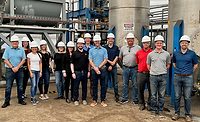RC Q&A: EXPLORING 2022 WITH S-5! CEO ROB HADDOCK

Editor’s Note: Gauging the pulse of the roofing industry annually continues to be a challenge as roofers adapt to rapidly changing marketplace. In addition to the survey circulated last fall that laid the foundation for the 2022 Roofing Report, RC also sought out the opinions of leaders from all segments of the industry.
As part of RC’s continuing coverage, here’s what S-5! CEO Rob Haddock shared with us.
RC: How would you characterize the state of the roofing industry in 2022?
RH: Roofing work in most cases domestically was considered essential during 2020 business prohibitions, so 2020 was a relatively good year for roofing contractors. In 2021, it was even better but not exempt from supply-side issues and cost escalation. Like all sectors of the economy, our industry has seen raw material price increases and supply chain backlogs like never before. Many producers had shut down production and inventories became decimated. That’s raw material at its source. The result is an increase in demand along with a decrease in supply. Because of this, “too much money was chasing too few goods” (Warren Buffet’s definition of inflation).
Costs should begin to ease by Q2, 3 and 4 2022 as raw material producers get geared up and freight channels loosen. With projects previously on hold now being completed, the moderate deceleration of construction will also help to level costs and bring them down, but not anywhere near pre-pandemic levels. Roofing business will slow down a bit from 2021, but many would count that as a blessing—it has been CRAZY!
RC: Last year was dominated by supply shortages. What impact did that have on your company, and what did you learn?
RH: At S-5!, our lead times got pushed out—but only by a few weeks. From a company perspective, we saw it coming and didn’t wait to find alternative sources. We had them on board and have been able to maintain our long-standing relationships with key suppliers and customers. They understand our situation and we―theirs. We are all in the same boat―trying to meet the demand.
What we learned substantiated what we already knew: Always have a “Plan B”. It reduces a lot of scrambling around, stress and drama. When you have to execute Plan B, make sure to have Plan C in your hip pocket too.
RC: Were there any specific ways S-5! helped contractors?
RH: At the onset of the pandemic, we kicked off a series of educational webinars and video conferences to stay in front of customers and provide real education and product training. We introduced a more user-friendly website with revamped content, up-to-date information and additional resources, including our new resource center, new training center and new web-based tools like our project configurator, solar calculator and improved snow calculator.
RC: Have you seen any progress in the workforce shortage in roofing?
RH: With 12 million job openings currently (7.5M pre-pandemic), labor shortages will continue but should improve somewhat over 2021 since the generous benefits provided by the federal government have expired.
S-5! has also experienced the labor shortage firsthand at our manufacturing plant with competition from government-subsidized income paying so many to stay at home. As a result, roofing and manufacturing companies alike have had to shift and invest more in their people—providing growth opportunities, more benefits, leadership training and job security. These are not bad things.
Our company is not reducing our labor force but further automating processes to reduce dependence on direct labor. In so doing, we are increasing efficiencies. Again, not bad things. Roofing contractors can do similarly by investing in the best tools, equipment, materials and training to maximize labor efficiencies.
RC: This year’s survey data showed metal roofing again continued to increase in popularity; what is it about the metal market that’s working?
RH: Within the past four decades, well over 2 billion square feet of metal roofing has been installed in the United States each year. That number continues to grow, and it’s more than any other roof type except asphalt shingle.
The roots and technology of metal as a cladding material date back more than 3,000 years. It has always been coveted as a premium roofing option but has been handicapped by higher initial costs than the alternatives. Beginning in the mid-1800s and continuing to the present day, production technologies and the use of aluminum and coated steel sheeting began to narrow the premium price chasm. Now it competes with other premium roof materials but lasts two to four times as long.
Today’s trends point toward evaluating the long-term costs of owning a roof. The life-cycle costs and environmental appeal of metal truly offer many advantages. With escalating labor issues, the value of a material that lasts 3 or 4 times as long is much more relevant. As a result, metal is becoming the roofing material of choice for both commercial and residential applications.
RC: Why is now the right time for contractors to be in or get into metal?
RH: All contractors shouldn’t get into metal. It is difficult to be proficient in multiple disciplines (Jack of all trades—master of none). But those who can invest the time, money and training should. Metal’s market share is increasing disproportionately to other materials and has done so for several decades. But metal is also more unforgiving of installation error than other roof types, so mistakes can be more irreversible and costly. “Jumping” into metal is a bad idea. “Easing” into it with well-trained and qualified mechanics is a good idea.
RC: What are you proudest of the company having come through all these challenges?
RH: At S-5!, we quickly shifted in the wake of the pandemic. We put our heads together, mobilized, got creative and activated plans to not only keep our business afloat, but to thrive and be well-positioned for the future. And by 2021 yearend, we saw strong double-digit growth that we are also expecting again in 2022.
Instead of looking for problems, we looked for opportunities. Those opportunities were (and still are) out there—to respond to the near term, manage differently and plan for the longer term. We shifted thinking, re-directed resources, re-invested and prepared for the (new and increased) demand.
Looking for a reprint of this article?
From high-res PDFs to custom plaques, order your copy today!






